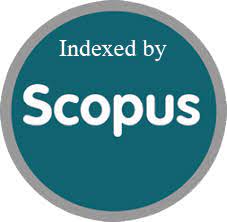Optimizing Resource Utilization Through S.T.E.M Education: A Pathway to Innovative Problem-Solving
DOI:
https://doi.org/10.52783/jns.v14.4027Keywords:
STEM education, resource optimization, gender disparities, project-based learning, NEP 2020Abstract
This study looks at how resources have been availed to 90 students in STEM-oriented Schools of Specialized Excellence (SoSE) in Delhi: affiliated non-STEM schools, and a public school, while trying to figure out the way forward on effective STEM solutions to all kinds of problem-solving. Analysing survey responses according to 30 SoSE, 30 Non-SoSE, and 30 Public School student, the study lines out strong divergent modes of resource utilization for innovation. In fact, non-SoSE students did better than them on 7 out of 10 metrics in spite of limited institutional support available to them. The most gender-discrepant cases within SoSE show that boys expressed 12-27% higher confidence in terms of the efficiency of tools (Q1) as well as using those very same tools (Q3), whereas girls dominated in their ability to reuse past experiences (Q8). Among systemic weak spots was that 28% of SoSE respondents were unable to select resources with Q6: "I use whatever the teacher provides," and 22% found time wasted in group work: Q4: "Group work wastes time."
Insights note qualitative contradictions: while students from non-SoSE are outperforming their SoSE counterparts, they are focusing on infrastructure than the building blocks of skills. Girls' adaptive learning strategies (Q8) can convert that potential to iterative innovation, whereas technology-related aspects for boys seem to follow the general tendency of the world. Public school challenges closely resemble conditions in digital India, with only 18.4% functional computer labs across schools (ASER 2022).
Bridging these three gaps will be possible through the following pathways:
- Mobile STEM Labs: Use of shared resources such as 3D printers, coding kits into underserved schools.
- Gender interventions: Workshops for girls on open sources' tools and boys for collaborative problem solving.
- Curriculum Reforms: Doing project-based learning instead of examinations, like IoT prototypes and data analysis challenges.
In fact, aligning resource allocations with pedagogical innovation is what this study offers pertinent strategies that push forward the goals of transforming STEM education into a catalyst for equitable, real-world problem-solving, as per the prescriptions of India's National Education Policy (NEP) 2020.
Downloads
Metrics
References
ASER. (2022). Annual Status of Education Report (ASER) 2022. Drishti IAS. Retrieved from https://www.drishtiias.com/daily-updates/daily-news-analysis/17th-aser-2022
Bhattacharjea, S., & Wadhwa, W. (2024). [Co-authored journal article on research methods]. International Journal of Research and Method in Education. ASER Centre. Retrieved from https://www.asercentre.org
Kumar, D. (2024). Improving children's foundational learning through community-school participation. Labour Economics. ASER Centre. Retrieved from https://www.asercentre.org
How NEP Can Help Boost STEM Learning in India. (2025, January 1). The Higher Education Review. Retrieved from https://www.thehighereducationreview.com/magazine/how-nep-can-help-boost-stem-learning-in-india-HINI881720683.html
MakersMuse. (2025). Transform your school with innovative STEM lab setups. Retrieved from https://makersmuse.in
STEM Alliance. (2022). IBM SkillsBuild Competition 2022. Retrieved from http://www.stemalliance.eu/ibm-skillsbuild-competition
What is Finland's Phenomenon-based Learning approach?. (2025). Teacher Magazine. Retrieved from https://www.teachermagazine.com/au_en/articles/what-is-finlands-phenomenon-based-learning-approach
OneWorld Foundation India. (2025). IT@School, Kerala. Retrieved from https://oneworld.net.in/focus-area/knowledge-and-research/itschool-kerala
DPS RK Puram. (2024). EI - ASSET Workshop. Retrieved from https://dpsrkp.net/ei-asset-workshop/
Here's how four-pronged approach bridge the gender gap in Indian STEM education. (2024, May 30). India Today. Retrieved from https://www.indiatoday.in/education-today/featurephilia/story/heres-how-four-pronged-approach-bridge-the-gender-gap-in-indian-stem-education-2545751-2024-05-30
Frontiers in Education. (2025). Frontiers. Retrieved from https://www.frontiersin.org
Banerji, R. (2024). [Keynote address]. Annual Conference of What Works Hub for Global Education. ASER Centre. Retrieved from https://www.asercentre.org
National Education Policy (NEP). (2020). Ministry of Education, Government of India. [Policy framework cited via Higher Education Review article].
IBM SkillsBuild. (2022). SkillsBuild for Students and Educators. STEM Alliance. Retrieved from http://www.stemalliance.eu/ibm-skillsbuild-competition
Silander, P. (2015). Phenomenon-Based Learning: A Case Study of Finnish Pedagogy. Teacher Magazine. Retrieved from https://www.teachermagazine.com/au_en/articles/what-is-finlands-phenomenon-based-learning-approach
Downloads
Published
How to Cite
Issue
Section
License

This work is licensed under a Creative Commons Attribution 4.0 International License.
You are free to:
- Share — copy and redistribute the material in any medium or format
- Adapt — remix, transform, and build upon the material for any purpose, even commercially.
Terms:
- Attribution — You must give appropriate credit, provide a link to the license, and indicate if changes were made. You may do so in any reasonable manner, but not in any way that suggests the licensor endorses you or your use.
- No additional restrictions — You may not apply legal terms or technological measures that legally restrict others from doing anything the license permits.










